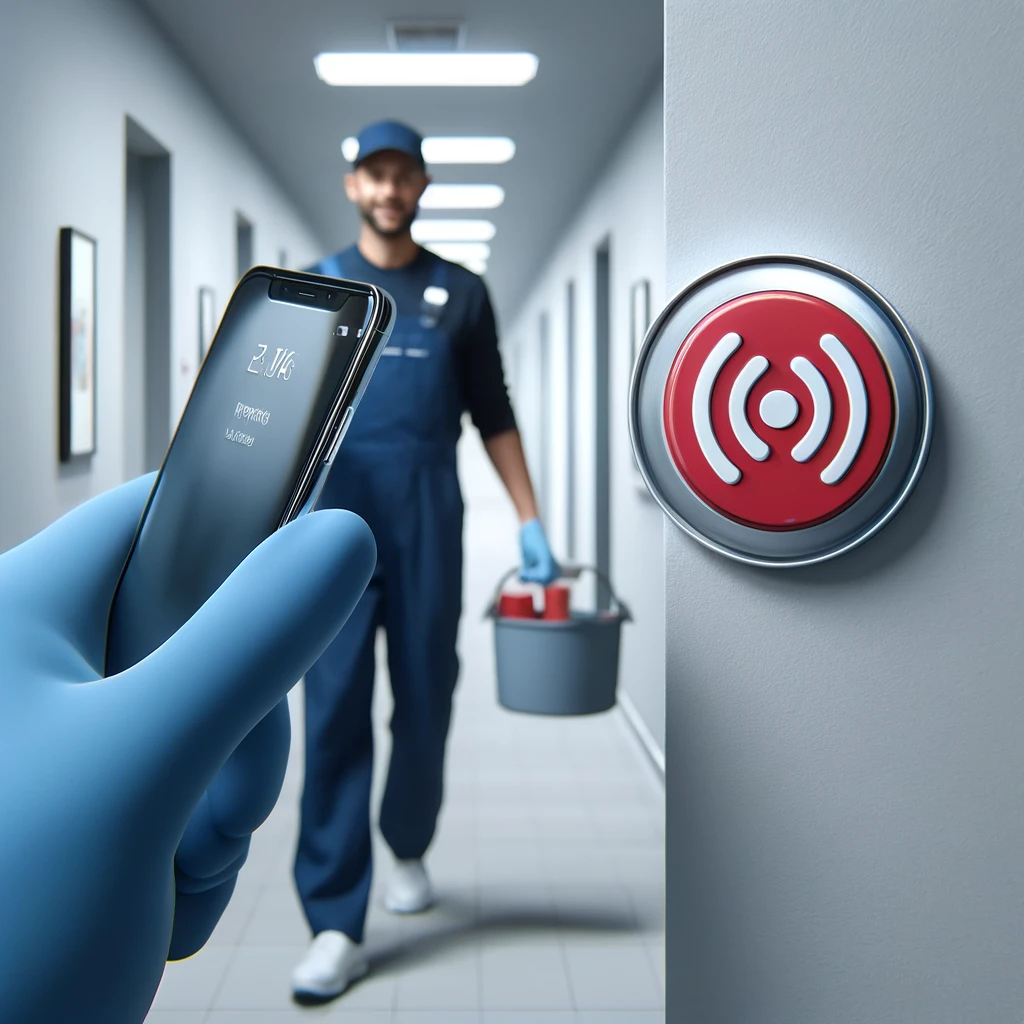Start typing in the search bar to see suggestions.
NFC Clocking via Smartphone
 The Ubiqod platform offers the widest range of solutions on the market for time tracking and activity monitoring of teams. In addition to physical time clocks and badge readers, QR code-based solutions, and kiosks, Ubiqod allows users to clock in without contact using the NFC function of their personal or professional smartphone.
The Ubiqod platform offers the widest range of solutions on the market for time tracking and activity monitoring of teams. In addition to physical time clocks and badge readers, QR code-based solutions, and kiosks, Ubiqod allows users to clock in without contact using the NFC function of their personal or professional smartphone.
Advantages and Disadvantages of NFC for Time Tracking
NFC has many advantages that appeal to smartphone users equipped with this technology. Increasingly used and known by the general public, this technology is particularly used for contactless payments with our mobile devices. It offers an interesting alternative to QR codes, especially since with Ubiqod, its use does not require installing a dedicated app; everything is done using the user’s usual web browser.
The option in Ubiqod to link the user’s smartphone with a time tracking ID also makes the experience even smoother: the user just needs to indicate whether they are arriving or leaving.
Advantages of NFC Time Tracking
Harder to duplicate than QR codes
It is very easy to generate a QR code from a URL. Encoding an NFC tag requires more knowledge and resources, although it is relatively accessible (see below). Duplicating the tag also requires proximity interaction, which limits risks.
Simple to use
Once mastered, NFC technology offers an especially smooth experience. Simply approach the smartphone to open the Ubiqod time tracking interface. This experience can be further enhanced with the use of NFC-compatible smartwatches.
Disadvantages
Less known to the general public than QR codes
Since COVID-19, many people have learned to use and scan QR codes. NFC, though more promising, is a technology that is less known to the general public, and usability tests show that users struggle to adopt it. However, in a professional context, a brief training session for staff can overcome this issue.
Compatibility and activation of phones
Not all smartphones are equipped, and NFC must be activated to work.
More complex security
Unlike with QR codes, which can be secured with Ubiqod Key, using standard tags does not offer a comparable level of security.
Creating an NFC Tag for Time Tracking
Purchasing NFC tags
It is possible to buy blank NFC time tracking cards that can then be encoded using an app and a smartphone. Some providers may also handle the data encoding (which simply involves entering the tracker’s URL into the tag).
Downloading an app
To encode an NFC card or badge yourself, you need to download an app. We recommend NFC Tools in the Pro version for Android smartphones.
Writing/encoding the tracker URL (NFC Tools PRO)
Step 1: Add a URL type record in NFC Tools
Use the tracker URL in Ubiqod (tracker menu, QOD tab):
Step 2: Confirm and write the tag
Write-Locking the Tag
To prevent the tag from being reused for fraudulent purposes, it is recommended to lock the tag for writing with the app after encoding the URL. This operation is irreversible, but thanks to Ubiqod, you can still evolve your interface without having to re-encode the NFC tag.
User Experience for Clocking In
Activating NFC
For this to work, the user must have a smartphone compatible with NFC technology and have this feature activated.
Passing the Smartphone over the Tag
The user must bring their mobile device close to the tag to trigger the opening of the interface in a browser. It is preferable to know in advance where the NFC chip is located on the smartphone, as this location can vary between brands and models (although it is often placed at the top of the device).
Completing the NFC Clocking
Once the clocking page is opened, the process is the same as what is activated with scanning a QR code or using a kiosk!